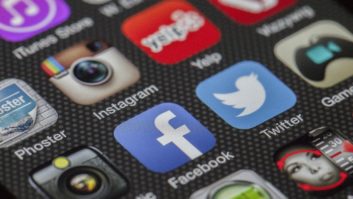It’s time to get holistic!
Edison Research Senior VP Tom Webster recently said: “With the surge in smart speaker ownership and the continued growth of podcasting and streaming audio, it is more important than ever for brands to have a holistic audio strategy.”
What led him to that conclusion? It’s the data from the 2018 “Infinite Dial,” released this month. The study of Americans’ use of digital platforms and new media is performed annually by Edison Research and Triton Digital.
Background: Edison is a firm that does surveys and provides research information to clients including radio ownership groups. Triton Digital is a technology and services provider to the digital audio and podcast industry.

Once again this year, 2,000 people were interviewed in January and February by phone, both landline and mobile users. Respondents were 12 and older, selected via random digit dial sampling.
What follows are highlights.
GET “SMART”
Radio World readers already know that podcasting has had a remarkable second life. In 2018, the researchers found, the pod continues to grow steadily; 44 percent of Americans now say they have listened to one, up from 40 percent last year. Among the places where more people listen to podcasts more is the car, where of course radio has a particular interest.
What about smart speakers, those voice-controlled devices like Amazon Echo and Google Home? You could be forgiven for thinking these are ubiquitous, given news coverage in RW and elsewhere. They’re actually not, but watch out; smart speaker ownership did more than double from a year ago; 18 percent of Americans — 51 million of us — now live in households with at least one of these gizmos. In fact, the authors report that smart speakers are being adopted today at a faster rate than smartphones were in their own early days.

At the same time, you can probably guess that fewer Americans have actual AM/FM radios in the home these days. The study shows continued decline in standalone radio ownership. Twenty-nine percent of us do not own an AM/FM radio at our chateaux. More dramatically, fully half of the 18–34 demo don’t have a single radio in the house. (The researchers thus deem that radio “has a home hardware challenge.” Yes, I’d say so.) However, lest we lose sight of a bigger picture, they also confirmed that radio remains “by far” the dominant medium in the car.
NOT FEELING SOCIAL?
Meanwhile, it comes as no surprise that smartphone ownership has exploded since 2010, and is now at an estimated 233 million people. But tablet ownership may have peaked last year, or at any rate it fell back slightly, to about 50 percent ownership.
What I didn’t see coming was an ebbing in overall social media use, though social is of course still massively popular. Notably, Facebook dropped off, especially among younger users. FB remains the social media brand used most often, while Snapchat and Instagram are growing their share; but you can be sure FB won’t be happy to learn that the percentage of 18- to 35-year-olds using it fell sharply, from 48 to 35 percent in just a year. (While I think we should be careful when drawing conclusions from dramatic individual data points like that, the trend seems clear.)
On the other hand, online listening is still on an upward track. Online audio’s monthly audience is now 180 million Americans, or 64 percent of Americans 12+, thanks to growth in Spotify, Apple Music and Alexa-driven Amazon Music listening. (I find it interesting to compare this finding to separate results from Nielsen Audio, which estimates that broadcast radio reaches 228.5 million every week while streaming audio reaches 67.6 million weekly).

And despite the rise of other services, Pandora continues to lead the online radio space; 31 percent of Americans have listened in the past month.
POD LESSONS
Edison and Triton used a subsequent Facebook Live broadcast to extract lessons for podcasters; you can read more about it by searching “Infinite Dial” at radioworld.com, but Webster laid out takeaways for podcasters seeking a bigger slice of the speech audience.
Among them: Explain the content of podcasts, not the technology. He said that when respondents were questioned regarding what they liked the most about podcasts, their answers centered around four topics — content, connection, community and learning something new. Despite that, current promotional practice tends to just list podcasts and discuss technical topics such as RSS feeds, mobile apps and devices. He offered advice that, come to think of it, applies well to anyone in radio: If podcasters would align promotional strategies with the reasons that people listen, the technology side should take care of itself.
Comment on this or any story. Email [email protected] with “Letter to the Editor” in the subject field.












